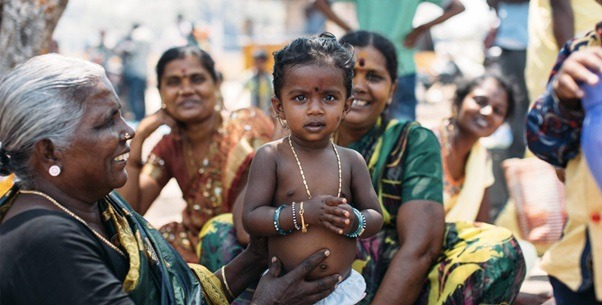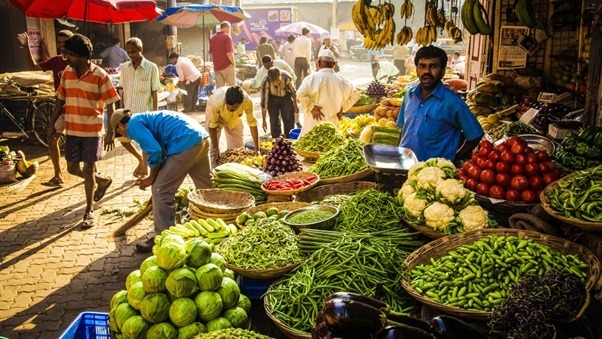Foreigners have contradictory impressions of traveling in India. For some, the country is striking for its poverty and devastation; for others, it has become the best place to live. Many come to India to rejuvenate their spiritual forces and to discover their creative abilities.
Also, in the country are pretty popular online casino real money india. So you can also visit such sites and make sure.
Life here has its minuses and pluses. The downsides include:
- High taxes;
- poor medical care and infrastructure;
- the climate is too hot;
- high unemployment;
- low wages;
- high levels of illiteracy;
- crime
But life here has its pluses. People in India live for themselves and don’t rush anywhere. After the bustling megacities, immigrants like such a measured way of life. Compared to Europe, food is cheap, and fruits and vegetables are high quality. In India, the conditions are ideal for leading a healthy lifestyle and practicing yoga.
General information about the country: government, climate, economy, ecology
The Republic of India is located in South Asia and shares land and sea borders with China, Pakistan, Nepal, the Maldives, and several other countries. It is the largest South Asian country.
India is washed by the Indian Ocean and flanked by the Himalayas and the Thar Desert. The country lies in four climatic zones, from humid tropical to alpine. It’s hot and humid from June to October and relatively calm – from November to February. In different regions in January, the temperature may be about +15 degrees; in June, it rises to +48 degrees. From June to October, the temperature is about the same – +28.
The head of state is the president, elected by the people for five years. The head of government is the prime minister. Legislative power is executed by parliament consisting of two houses – the Council of states and the People’s chamber. The Council of Ministers exercises executive authority in addition to the president and prime minister.
India’s economy is the world’s 12th most extensive, and it has become one of the fastest-growing economies in the world in terms of GDP growth in recent years. One of the reasons why this has begun to happen is cheap labor. The commoner in India lives poor and is willing to work for free. It explains the low cost of Indian goods. Potatoes, rice, sugar cane, tea, and cotton are grown in India. Minerals are mined here, and the chemical, textile, oil, food, and automobile industries are developed.
Population: number, nationalities, density, literacy, occupation, culture, mentality
India is home to a vast number of people. Today it is the second-most populous country in the world after China. It is home to more than 1.3 billion people. And the population density is 364 people/km². Various nationalities and ethnicities include Bengalis, Jats, Tamils, and others. In addition, there are immigrants from neighboring Asian states and Europe. According to accounts, the local population is poorly educated. The average literacy rate is about 65%. Low income and unwillingness to change something in their lives explain their reluctance to learn. The vast majority of people in India have been engaged in agriculture for centuries and do not intend to leave the village, so they do not consider it necessary to get an education. A smaller portion of the population is employed in industry and tourism. Many work in clothing factories, which are in demand worldwide.
The peculiarity of the local mentality – is respect for the ancient traditions. Here they wear national clothes, speak Hindi, honor their elders and gurus, and still divide society into castes. Hindus do not aspire to change their social status and earn more. They believe that what happens in a person’s life is determined by higher forces and that he has no power over it. So there is no hurry, and the word “stress” is unknown to Hindus.
Professions and Salaries in Demand
Despite high unemployment, India needs highly qualified specialists in different fields. The list of the most in-demand professions for many years includes the following:
- biotechnologist;
- surgeon;
- dentist;
- an anesthesiologist;
- pharmacist;
- IT specialist;
- civil engineer;
- computer programmer;
- mechanical engineer.
Teachers, higher school teachers, translators, and specialists in tourism are also needed. Salaries in India are far below European levels. The average annual income of the country’s inhabitants is $2700. But the difference between the salaries of representatives of different professions is enormous. People earn $83 a month in cities and the countryside – no more than $60. The highest-paid jobs are programmer, engineer, IT specialist, and therapist. The latter gets about $225 a month. In India, the minimum wage is set at $57.
Note the other articles. For example, the game topic will be helpful to you if you want to distract yourself.
How ordinary people live in India: the standard of living
Housing prices in different cities differ significantly. In the center of Mumbai, one sq.m. costs $ 6,850, and on the outskirts of the town $ 2640; in New Delhi – $ 3000-1250, and Calcutta – it is $ 1400-700. Indian citizens can take out a mortgage at a rate of 9.9%. Only wealthy people can buy their own homes. Many have to rent rooms and apartments. There are many homeless people in the country because many do not have enough money for rent either. In a month, the owner of a one-room apartment pays about $20 for utilities, $18 for home internet, and $5 for cell phones.
How ordinary people live in India depends on their region and profession. The highest salaries belong to medical workers and programmers in cities, the least of all people living in the countryside, but the average annual income of a resident is $2700.
On any income, the resident must pay tax from 10% to 31.5%: wages, profits on deposits, or the sale of anything. The country has social programs to support different segments of the population. People with disabilities, the unemployed, widows, and others receive benefits. The size of pensions varies from state to state. The average payment is about $3 to $7. The highest prices are obtained by pensioners who work in public service. Life expectancy in India is almost 69 years. And citizens are deterred from working until they are ancient because the pension of many is usually below the subsistence level of $57.
In India, there is free medicine, but the level of services provided is shallow; they are used only by the country’s poorest citizens. Quality medical care in the country can be obtained only with money. In the photo, paid Indian clinics look like five-star hotels, but only wealthy people can afford treatment in them. There are many pharmaceutical factories in India, so medicines here are tens or hundreds of times cheaper than in Europe.
The government is trying to fight illiteracy, but so far without success. Citizens can get free schooling, but many parents are trying to get their children into private schools. The higher education system here is well developed. There are 220 universities and more than 10,000 colleges in the country. However, higher education is not free. A year of study costs $15,000. Free places are available, but they are few. When a student finishes their studies, they may get a master’s, bachelor’s, or doctoral degree.
Living standards by city and region
How people live in India depends on the city and state. Residents of large cities have the highest income. For example, the average annual salary in Mumbai is $829; in New Delhi – it is $612; in Kochi – $532; in Kolkata – $503; in Panaji – $365. The most expensive to buy an apartment or house would be in Mumbai and New Delhi, and the cheapest – is in Jaipur.
The southwestern regions of the country are considered the most developed and wealthiest. However, the standard of living in the central and northern parts of the country is lower. The most prosperous state is Chandigarh, and the least successful is Bihar.


